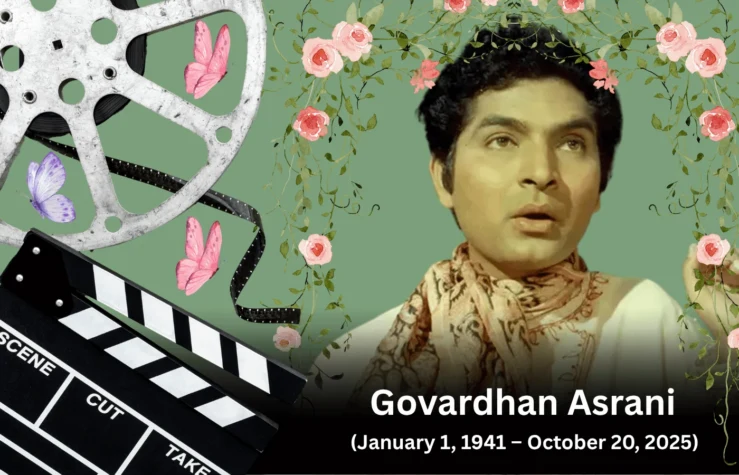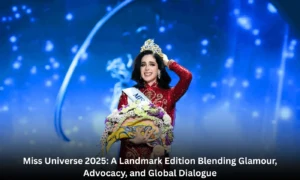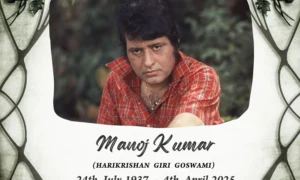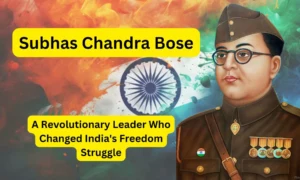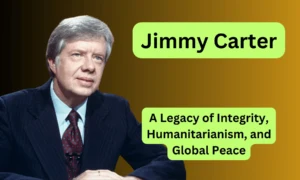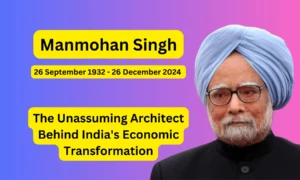The Indian film industry mourned the loss of one of its most beloved comedic talents on October 20, 2025, when veteran actor Govardhan Asrani passed away at the age of 84. The timing was particularly poignant—Diwali, the Festival of Lights—and just hours before his death, Asrani had shared cheerful Diwali greetings on social media, unaware that his final curtain call was imminent.
Who was Asrani?
Govardhan Asrani was an iconic Indian actor, director, and comedian who appeared in over 350 Hindi and Gujarati films during a career spanning more than five decades. Best remembered for his unforgettable portrayal of the eccentric jailer in the 1975 blockbuster Sholay, Asrani became synonymous with impeccable comic timing and versatile character performances that brought joy to millions across generations.
This tribute explores the remarkable journey of a man who transformed from a struggling carpet dealer’s son in Jaipur to one of Bollywood’s most prolific supporting actors—a legacy built on laughter, dedication, and an extraordinary ability to make even the briefest screen appearance unforgettable.
The Journey Begins: Early Life and Training
Birth and Family Background
Govardhan Asrani was born on January 1, 1941, in Jaipur, Rajasthan, into a middle-class Sindhi family. His father had migrated to Jaipur following the Partition of India and established a modest carpet business to support the family. Born into a family with four sisters and three brothers, young Asrani showed little interest in the family trade, being notably weak in mathematics but passionate about the performing arts.
Despite financial constraints, Asrani pursued his education at St. Xavier’s School and later graduated from Rajasthan College in Jaipur. To fund his studies and pursue his dreams, he worked simultaneously as a voice artist at All India Radio in Jaipur—a job that would provide his first taste of performance and public speaking.
Education and The Big Break
Asrani’s professional acting journey began with formal training under Sahitya Kalbhai Thakkar from 1960 to 1962. In 1962, inspired by his passion for cinema, he traveled to Bombay (now Mumbai) seeking opportunities. A chance encounter with legendary filmmaker Hrishikesh Mukherjee proved transformative when Mukherjee advised him to pursue professional training.
FTII Pune: The Foundation of Excellence
In 1964, Asrani enrolled at the Film and Television Institute of India (FTII) in Pune, becoming part of its inaugural batch. This rigorous training laid the foundation for what would become a remarkable career. However, the journey wasn’t smooth. After graduating in 1966, Asrani discovered that his FTII certificate meant little in an industry that valued star power over formal training.
“I would roam around with my certificate, and they would shoo me away and say, ‘You think acting requires certificates? Big stars don’t have training here, and you think you’re special? Get lost,’“ Asrani recalled in a candid interview.
After months of rejection, a young Asrani briefly returned to Jaipur, where his parents urged him to join the family carpet business. But destiny had other plans. A pivotal moment came when Indira Gandhi, then India’s Information and Broadcasting Minister, visited Pune. FTII students, including Asrani and Jaya Bhaduri (later Bachchan), approached her with their grievances about the industry’s reluctance to hire trained actors.
Gandhi’s intervention proved crucial. She reportedly instructed producers to give opportunities to FTII graduates, leading to Asrani’s breakthrough role in Guddi (1971) alongside Jaya Bhaduri. The film’s success finally validated FTII training and opened doors for formally educated actors in the industry.
Film Debut
Asrani made his Hindi film debut in 1967 with Hare Kaanch Ki Choodiyan, where he played the friend of actor Biswajeet. Before establishing himself in Hindi cinema, he appeared in several Gujarati films, including his first Gujarati movie opposite actress Waheeda (not the famous Waheeda Rehman). These early roles in regional cinema helped him hone his craft before he found his footing in mainstream Bollywood.
Career Defining Roles
The Unforgettable Jailer in Sholay
While Asrani’s filmography boasts over 350 films, it was a brief but brilliant appearance in Ramesh Sippy’s 1975 masterpiece Sholay that immortalized him in Indian cinema. His portrayal of the eccentric, self-important jailer—modeled after Adolf Hitler—became one of Bollywood’s most iconic comedic performances, despite having limited screen time.
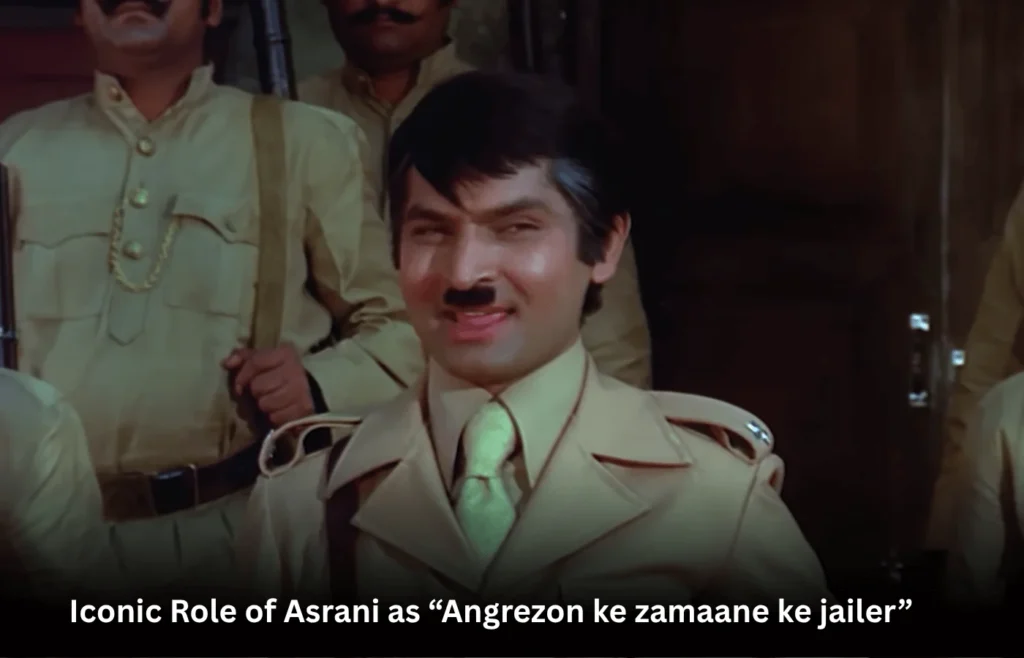
The legendary dialogue “Hum Angrezon ke zamaane ke jailer hain” (I am a jailer from the British era) has achieved cult status, recited by generations of fans. Asrani revealed that director Ramesh Sippy and writers Salim-Javed gave him a unique creative direction. “Ramesh Sippy once handed me a book filled with wartime images of Adolf Hitler,” Asrani reminisced. “He explained that my character—the jailer—was a pompous man who believed himself to be exceptionally shrewd, yet in truth, he was completely foolish. That contrast, he said, was the humor we needed to bring to life.”
The actor studied Hitler’s powerful oratory style and body language, drawing inspiration from how the dictator could provoke entire generations with his speeches. This creative choice—transforming a tyrant’s mannerisms into comedy—resulted in a performance that perfectly balanced satire with humor.
Even 50 years after Sholay‘s release, Asrani noted that there wasn’t a single event or function where he wasn’t asked to repeat his famous jailer dialogues. “It’s all because of Sippy saab’s direction and Salim-Javed’s writing. Even after 50 years, people still remember that role and those lines by heart,” he shared with the BBC.
Partnership with Rajesh Khanna
One of the most successful actor pairings in Bollywood history was the collaboration between Asrani and superstar Rajesh Khanna. The duo appeared together in over 25 films between 1972 and 1991, creating an on-screen chemistry that audiences adored.
Their partnership began with Hrishikesh Mukherjee’s Bawarchi (1972) and continued through numerous hits including Namak Haraam (1973), Aap Ki Kasam (1974), Abhimaan (1973), Ajnabee (1974), Prem Nagar, Anurogh, and Guddi. Asrani often played the close friend or sidekick to Khanna’s leading man, bringing comic relief and emotional depth to their scenes together.
In a 2022 interview, Asrani candidly discussed his working relationship with Khanna, noting that the late superstar “suffered from a superiority complex” and “believed that no one can shake him and he’s very powerful”. Despite occasional tensions, their professional collaboration produced some of Hindi cinema’s most memorable moments.
The Era of Hrishikesh Mukherjee and Comedy
A Creative Partnership That Shaped Careers
Asrani’s most fruitful and creatively satisfying collaborations came with the legendary filmmaker Hrishikesh Mukherjee. The director-actor duo first worked together in Satyakam (1969), where Asrani had a brief role. Impressed by his talent, Mukherjee cast him in a pivotal role in Guddi (1971), where Asrani played a struggling Bollywood actor whose dreams of stardom are shattered—a role that deeply resonated given his own early struggles.
When asked who his favorite actor was, Hrishikesh Mukherjee once declared: “Beta, it is neither Rajesh Khanna, nor Dharmendra. Not even Amitabh Bachchan. It is Asrani! What a talent, what an actor! Cast him as anyone, anything, he is ready for the challenge”.
Key Films with Mukherjee and Others
- Bawarchi (1972): Asrani excelled in the comic role of a self-styled musician dreaming of becoming a Bollywood composer. He fondly recalled, “I enjoy every film with Hrishida. But Bawarchi was a riot”.
- Abhimaan (1973): Playing star-singer Subir’s secretary who can’t bear to see his boss turn vain, Asrani delivered a performance so compelling that Amitabh Bachchan once told interviewers that “every scene with Asrani is a challenge”.
- Chupke Chupke (1975): This Hrishikesh Mukherjee romantic comedy featured Asrani alongside Dharmendra, Sharmila Tagore, Amitabh Bachchan, and Jaya Bhaduri, showcasing his ability to hold his own in an ensemble cast.
- Khatta Meetha (1978): Another Mukherjee collaboration that demonstrated Asrani’s range beyond pure comedy.
- Chhoti Si Baat (1975): Directed by Basu Chatterjee, this film featured Asrani as the slick rival to Amol Palekar’s mild-mannered protagonist, a performance filled with memorable comic moments.
- Rafoo Chakkar: Yet another film that cemented his reputation as Hindi cinema’s most reliable comic actor.
Other collaborations with Mukherjee included Mili, Alaap, Jurmana, Koshish, Parichay, and Mere Apne.
Director and Producer: Behind the Camera
Asrani wasn’t content with just acting. He ventured into filmmaking, directing six films between 1974 and 1997. His directorial debut, Chala Murari Hero Banne (1977), was particularly significant as it was semi-autobiographical, drawing from his own struggles to make it in Bollywood.
In Chala Murari Hero Banne, Asrani wrote, directed, and starred as Murari, a young man who dreams of becoming a film star. The film featured A.K. Hangal as his father—a tailor, much like Asrani’s real father’s profession was related to textiles—and included special appearances by major stars like Dharmendra, Hema Malini, Amitabh Bachchan, Rishi Kapoor, and even politicians Atal Bihari Vajpayee and Lal Krishna Advani.
He also directed Salaam Memsaab (1979), a comedy-drama starring himself opposite Zarina Wahab, which told the story of street singers aspiring for a better life. His other directorial ventures included Dil Hi To Hai (1992) and Udaan (1997).
Additionally, from 1988 to 1993, Asrani served as Director of the Film and Television Institute of India (FTII) in Pune, giving back to the institution that had shaped his career. During this tenure, he mentored aspiring actors while continuing his prolific film career.
The Man Behind the Comedian
Personal Life and Marriage: A Love Story Born on Set
Behind the comic genius was a devoted family man. Asrani married actress Manju Asrani (née Manju Bansal), a Hindi film actress who was active during the 1970s and 1980s. The couple’s love story began on the sets of films where they worked together, particularly during the making of Aaj Ki Taaza Khabar and Namak Haraam, when they fell in love.
Manju appeared in several films during her career, often working alongside her husband. After their marriage, she continued acting, and the couple collaborated on films including Chandi Sona (1977), Tapasya (1976), Jaan-E-Bahaar (1979), Jurmana (1979), Nalayak (1979), Sarkari Mehmaan (1979), and Chor Sipahee (1979).
In the 1990s, Manju also directed films and television series, including Maa Ki Mamta (1995). She largely maintained a low profile, prioritizing family over fame while supporting Asrani throughout his career. Their relationship was built on mutual respect and companionship that lasted over five decades.
The couple had no children, and Asrani is survived by his wife Manju, his sister, and nephew.
Style and Impact: A Unique Comedic Voice
The Art of Timing
What set Asrani apart in an industry crowded with talented comedians was his unique style—a perfect blend of physical comedy, expressive facial reactions, and impeccable timing. His nasal twang became his trademark, instantly recognizable to audiences across generations.
Director Priyadarshan, who worked extensively with Asrani in the 2000s, noted that the veteran could effortlessly make comedy look natural. Whether playing a flustered uncle, an exasperated landlord, or a bumbling official, Asrani brought authenticity to every role.
Unlike comedians who relied on slapstick or loud performances, Asrani’s comedy often carried an underlying humanity. His characters were never just caricatures; they were real people caught in absurd situations, which made them relatable and endearing.
Influence on Indian Comedy
Asrani’s contribution to Indian comedy extended beyond his performances. He demonstrated that character actors could achieve iconic status through consistent excellence rather than leading roles. His success paved the way for future generations of supporting actors who understood that memorable performances weren’t measured by screen time but by impact.
Film critics and colleagues consistently praised his versatility—the ability to seamlessly transition between pure comedy, dramatic roles, and everything in between. Filmmaker Hrishikesh Mukherjee’s assessment that Asrani was his favorite actor speaks volumes about the respect he commanded within the industry.
Recent Work and Legacy
Later Career: A Second Innings
While many actors from the 1970s and 1980s faded from public consciousness, Asrani experienced a remarkable career revival in the 2000s, largely due to his prolific collaboration with director Priyadarshan. This partnership introduced the veteran comedian to a new generation of audiences through a series of blockbuster comedies.
The Priyadarshan Renaissance
Priyadarshan’s ensemble comedies became the perfect vehicle for Asrani’s talents. His memorable roles in this era included:
- Hera Pheri (2000): As the frantic Bank Manager, Asrani became part of one of the most beloved comedy films of modern Bollywood.
- Bhool Bhulaiyaa (2007): Playing the earnest yet funny Murari, he demonstrated that his comic timing remained as sharp as ever.
- Garam Masala (2005): As the harried Mamu, he elevated the chaos that defined Priyadarshan’s style.
- Malamaal Weekly (2006): His portrayal of the eccentric villager Chokhey showcased his range.
- Bhagam Bhag (2006): As the flustered Event Manager, he was essential to the film’s comedic success.
- Chup Chup Ke (2006): Another collaboration that highlighted his flawless comic timing.
- De Dana Dan (2009): Playing the comically named Mamu Lee Chan.
- Khatta Meetha (2010): As the beleaguered Karodimal, Asrani delivered one of his most memorable performances of the modern era.
Other Notable Modern Films
Beyond Priyadarshan, Asrani remained active in Bollywood, appearing in films like Dhamaal, Hulchul, Deewane Huye Paagal, Welcome, Bunty Aur Babli 2, and R… Rajkumar. His ability to adapt to changing comedic styles while maintaining his signature touch was remarkable.
Actor Akshay Kumar, who worked with Asrani in numerous films including Hera Pheri, Bhagam Bhag, De Dana Dan, and Welcome, shared that he had shot scenes with the veteran just a week before his death for upcoming films Haiwaan and Bhoot Bangla. “He had the most legendary comic timing,” Kumar wrote in his tribute.
Awards and Recognition
Asrani’s exceptional talent was recognized with prestigious awards throughout his career:
- Filmfare Award for Best Comedian for Aaj Ki Taaza Khabar (1974)
- Filmfare Award for Best Comedian for Balika Badhu (1977)
- He also received nominations for films like Sargam and Ek Duje Ke Liye, testament to his versatility
Beyond formal awards, Asrani achieved something more valuable—the enduring love and recognition of audiences across multiple generations.
His Enduring Legacy
A 50-Year Career of Excellence
Asrani’s contribution to Indian cinema is staggering in its scope and consistency. Over a career spanning more than five decades, he appeared in over 350 films, working across Hindi and Gujarati cinema. He holds a rare distinction: appearing as a character actor and comedian in the highest number of Hindi films within a decade—101 films in the 1970s and 107 in the 1980s.
In Gujarati cinema, where he enjoyed parallel stardom, Asrani played lead roles from 1972 to 1984 and character roles from 1985 to 2012. His 1974 Gujarati film Amdavad No Rikshawalo became iconic, with his song “Hu Amdavad No Rikshawalo” (sung by Kishore Kumar) becoming an anthem for Ahmedabad that was even recreated in 2021.
An Irreplaceable Presence
Filmmaker Anees Bazmee, who collaborated with Asrani across several decades, fondly recalled their time together. “Asrani ji wasn’t just a brilliant actor; he was a genuinely wonderful human being,” he shared. “Working with him was always pure joy—he’d fill the set with laughter even when the cameras weren’t rolling. His signature laugh was one of a kind, something nobody else could ever replicate. His absence will be deeply felt.”
As Sholay completed 50 years in 2025, Asrani’s passing marked the end of an era that defined laughter in Indian cinema. His performances—whether in brief appearances or extended roles—continue to inspire actors and comedians, proving that true artistry transcends screen time and budget considerations.
Conclusion: A Final Curtain Call
Govardhan Asrani’s journey from a struggling voice artist in Jaipur to one of Bollywood’s most beloved character actors is a testament to talent, perseverance, and the transformative power of formal training. Through FTII, he not only honed his craft but later gave back by serving as its director, ensuring future generations would have better opportunities than he initially received.
His versatility was extraordinary—from the Hitler-inspired jailer in Sholay to the lovable sidekick in countless Rajesh Khanna films, from directing meaningful cinema to playing supporting roles in modern blockbusters. Asrani proved that supporting actors could achieve iconic status through consistency, dedication, and exceptional talent.
On Monday, October 20, 2025—Diwali evening—Govardhan Asrani passed away at Bharatiya Arogya Nidhi Hospital in Juhu, Mumbai, at approximately 3:00 PM. He was 84 years old.
The veteran actor had been admitted to the hospital four days earlier due to breathing difficulties caused by fluid accumulation in his lungs—a complication of age-related ailments he had been battling. His manager, Babubhai Thiba, confirmed that doctors had detected water in his lungs, which ultimately led to his passing.
Poignantly, just hours before his death, Asrani had posted Diwali greetings on social media, wishing his fans well during the festival. The post, likely shared by family members, appeared around 2:00 PM, approximately an hour before he breathed his last.
In accordance with Asrani’s final wishes, his family conducted a quiet, private funeral on the same evening at Santacruz Crematorium in Mumbai. His wife, Manju Asrani, along with close family members and friends, attended the last rites.
“Asrani had always expressed that he wanted his farewell to be a quiet, personal affair,” his manager revealed. “Honoring his wish, the family chose to keep the news of his passing private.” Later, a heartfelt statement was shared on his official Instagram account, reading, “Our dearest Asrani ji—who filled countless lives with laughter—is no longer with us. His departure leaves a void that words cannot fill. The legacy of joy he created through his performances will forever remain etched in our hearts and the history of Indian cinema.”
Asrani’s legacy lives on through the countless films that continue to entertain and inspire audiences worldwide. From the iconic “Hum Angrezon ke zamaane ke jailer hain” to the subtle comic moments in ensemble casts, his performances remain timeless treasures of Indian cinema.
Which of Asrani’s roles is your favorite? Was it the unforgettable jailer from Sholay, his endearing partnership with Rajesh Khanna, or perhaps his modern avatars in Priyadarshan’s comedies? Share your memories and favorite Asrani moments in the comments below! Let’s celebrate the life and laughter of a true legend who proved that the best comedy comes from the heart.

